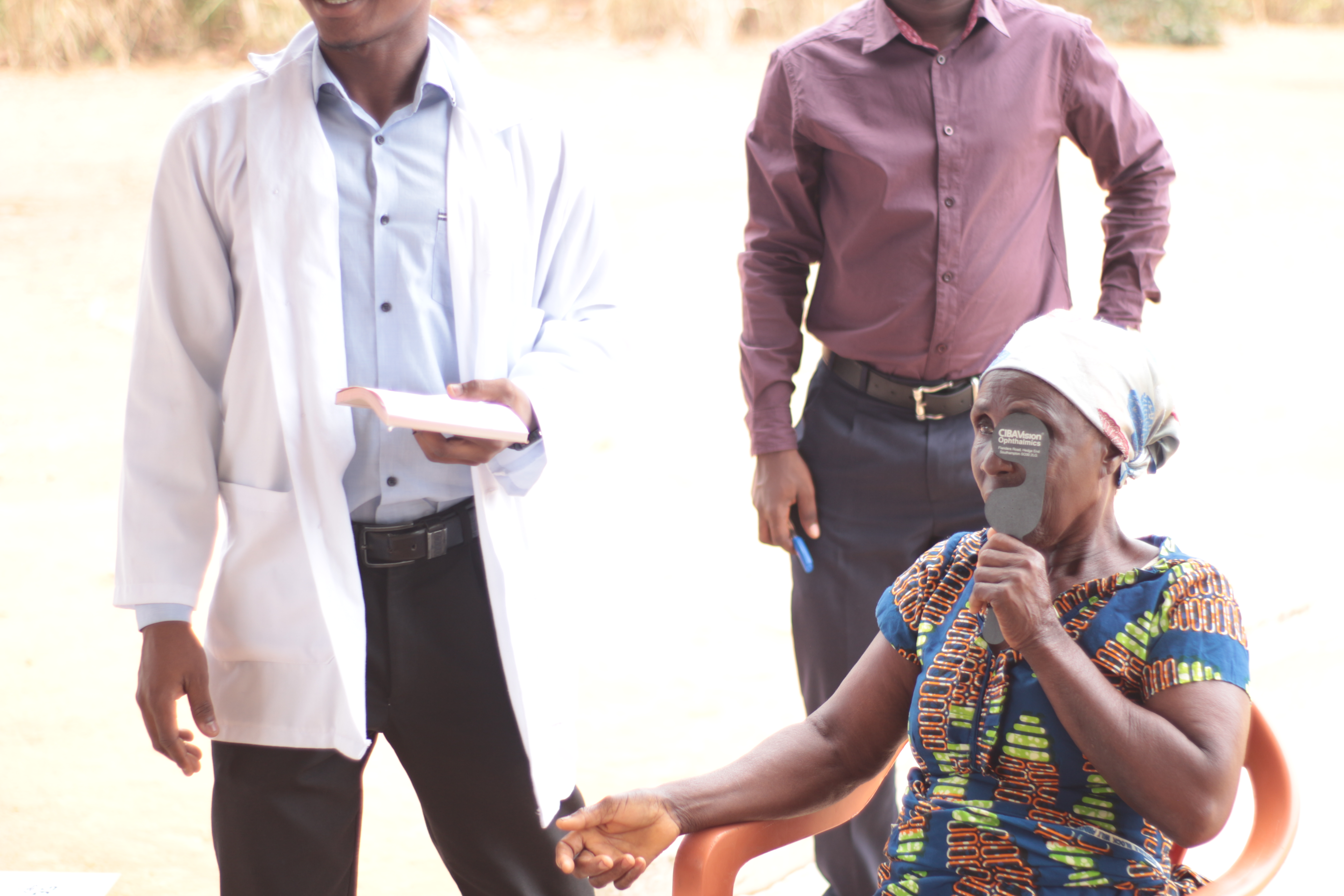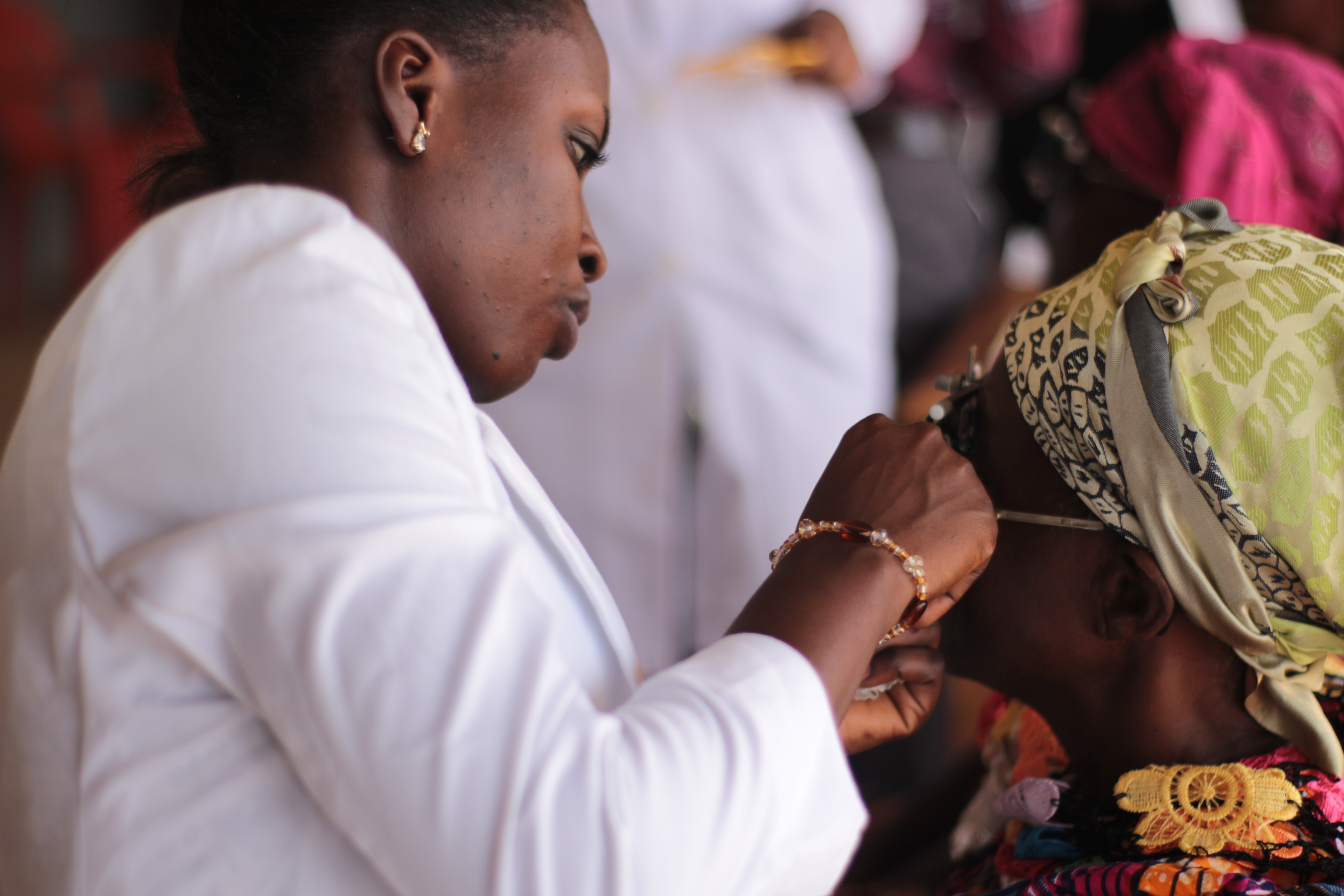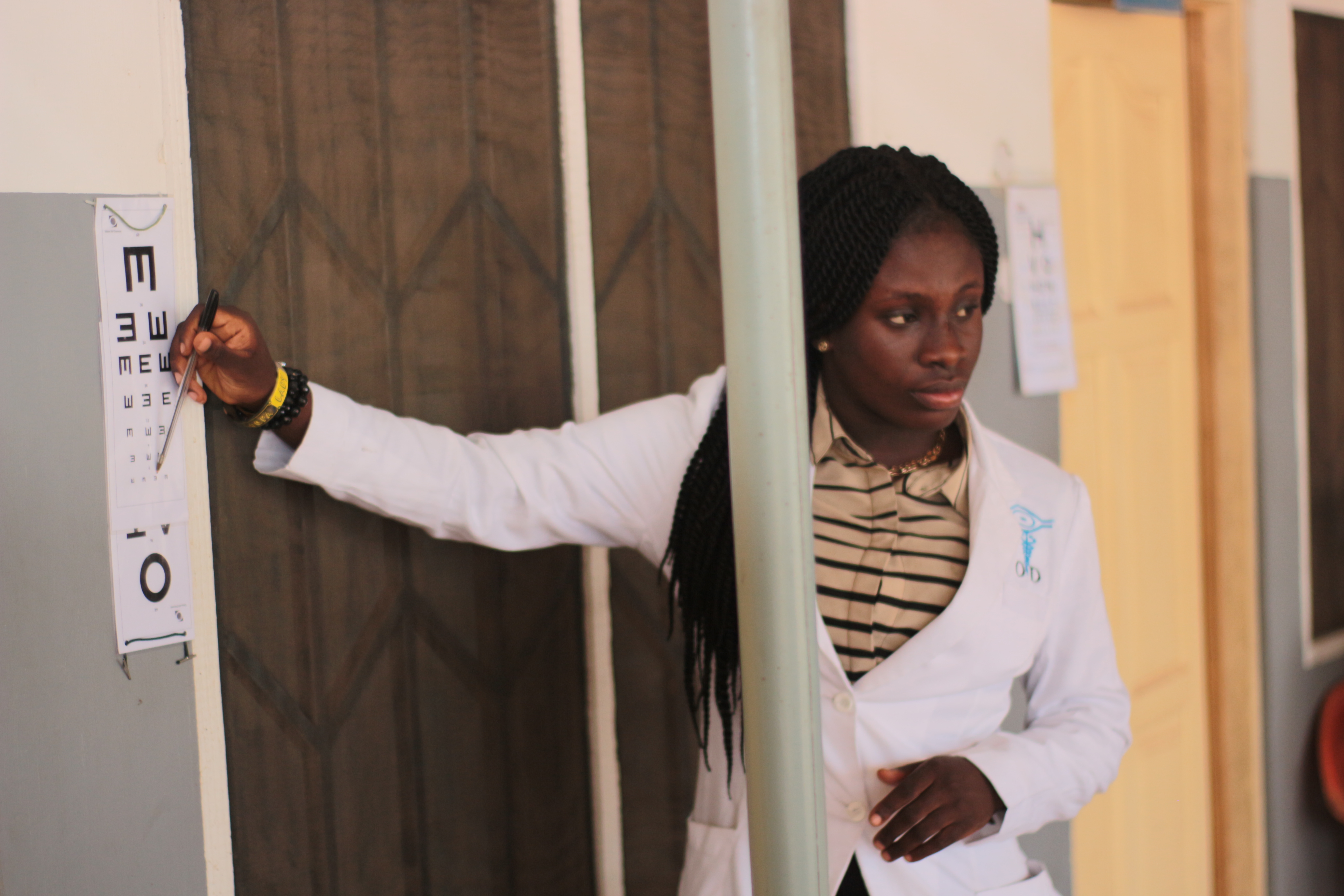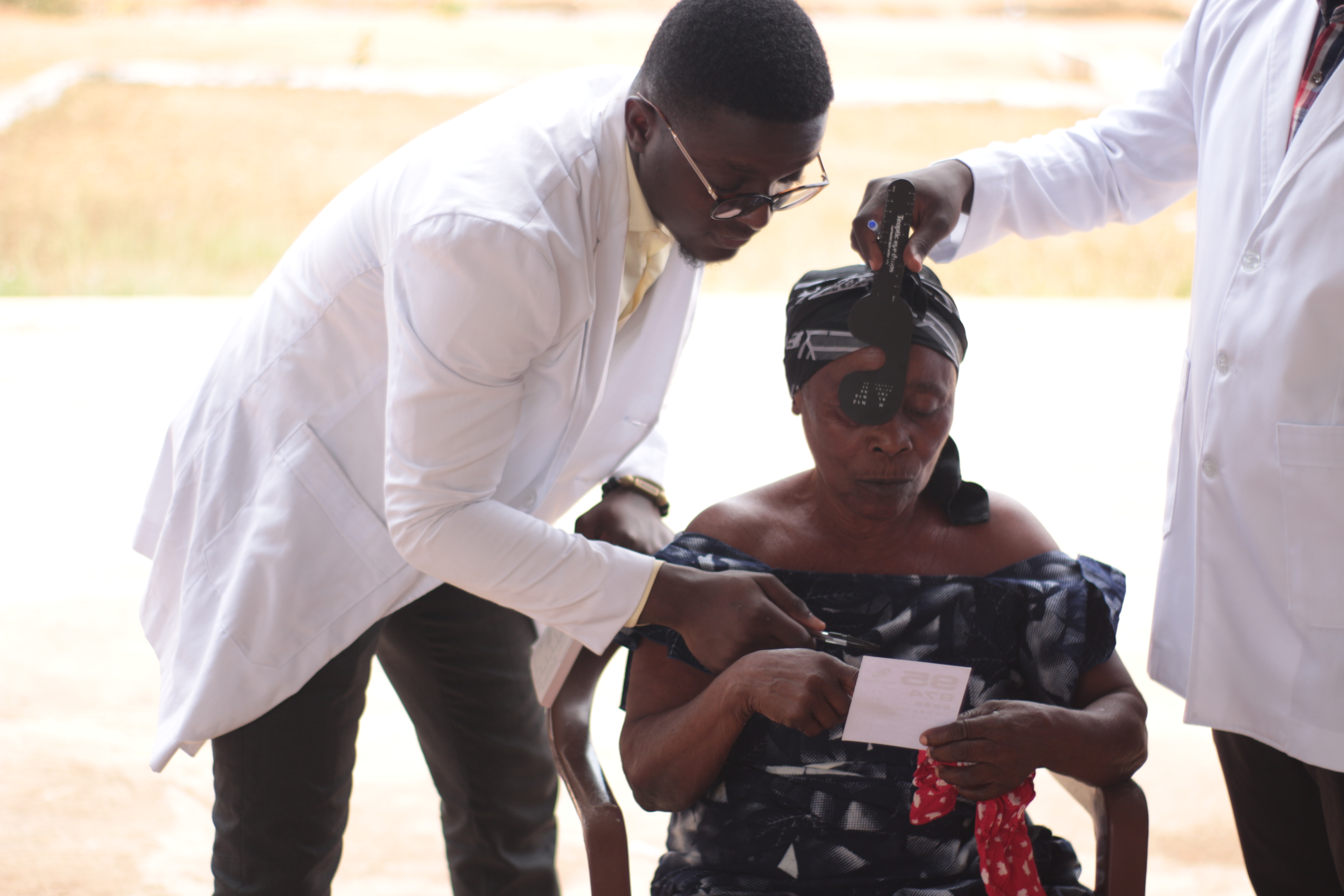Greetings to all and sundry,
It is another beautiful day today, the 2nd day, or the 3rd day of the week depending on how your calendar starts, whichever it may be though, it only signifies progress and the fact that we are moving forward and getting things done. Each day that we get to see is a gift and we ought to appreciate the present.
I am optimistic that your days so far have been fruitful and that things are going according to plan for you. I also hope you are doing amazing and having a wonderful time both at work and during your leisure hours. You make writing and interacting on the blockchain fun and so I am always glad to know my readers are in good health and condition.
Introduction
The eye clinic or hospital is a place we go for our ocular health check, for some of us probably got the chance to have our first eye exams when we were old and probably couldn't read the small prints we could previously see because of presbyopia setting in and for some we were lucky enough to have our first eye appointment as a baby, toddler, infant or a child.
You probably couldn't see the board well due to your refractive error and that prompted your teacher to inform your parents to send you to the Optometrist for a consult, good for you, whichever category you may find yourself though, if you have ever been to the Optometrist's office then you are familiar with what I want to discuss today because this is a must at every eyecare facility.
So when you visit the eye clinic aside you getting through the routine of being registered into the hospital's system or getting your hospital or clinic card etc., before you get to the Doctor's office you may probably be asked to read some numbers, letters or identify some objects either on a screen or on a chart placed at a point on a wall where you sit somewhere else and point them out.
If you do not do this before going into the Doctor's office then you would have to do it when you finally get to the consulting room, you either do it before the conversation begins or whiles the conversation is ongoing, or after the conversation is done. Whichever the case may be though, you will do it and this is what is popularly known as a vision test or visual acuity test as a more technical term.
Visual Acuity
The visual acuity test is so much important because not only does it help measure the person's vision and indirectly the function of the macular but also protects the Optometrist in the case of medicolegal situations. Because I have seen patients who would come in for treatment and later tell you that your treatment worsened their vision and so they want to sue you when that is not even the case.
Patients can be difficult sometimes and not easy to deal with, which is why documentation and some tests are always a necessity, not only in eyecare but in all other health fields. And so when a patient comes in with such complaints you need only check the vision and compare it with previous vision so you could have something to go on. It also allows you to track the progress of a condition being treated.
For example, a patient who walks in with uveitis may probably have his or her vision reduced, something as low as 6/60, and when the medication starts to calm down the inflammation vision starts to improve moving down towards 6/6 until perhaps everything is cleared. It can also be used to monitor the progression or worsening of the condition, for instance in the case of glaucoma, it could tell you how the nerves are more damaged now and how small the vision left may be.
So what exactly is this visual acuity thing I am talking about? I am sure you are already asking because I seem to have just jumped into it, well visual acuity test simply measures how well you see or can perceive objects at particular distances. Ideally, for the emmetropic or ideal eye, objects from 6meteres and beyond are considered to be at infinity with regards to converging and diverging light and these objects ought to be seen just fine without any stress from the eye.
And so when this is not the situation, thus when we end up with shortsighted and farsighted individuals. So on the Snellen Chart which is the most popular chart used for visual acuity assessment (mind you there are different types and function differently and are measured differently), you would notice some writings in the form of fractions written beside it. This gives your healthcare provider an idea of how bad or good your vision is.
Now mostly the numerator is the same throughout, depending on where you find yourself it may be written as 20 which simply means 20 feet, or 6, which also means 6 meters. They are equivalent though and so they can be used interchangeably. It stands for the distance at which the test is being done or ought to be done. And so if your chart is a 6-meter or 20-meter chart it would have 6 or 20 as the numerator throughout.
Due to space the distance we have modified charts to be used at 3 meters distance and so these charts may have their numerators as 3. Now the denominators would change based on the line of the letters or objects on the charts (these are known as optotypes) and as it gets smaller it gets closer to the numerator. What they mean is that at the testing distance of the numerator, you can read this object of this particular size which ought to be able to be read clearly at the distance of the denominator.
And so let's use this example, say you read the Snellen chart and your doctor tells you that your vision is 6/60 or 6/36, it simply means that at 6 meters where you sat to read, you are only able to read objects whose size is such that they ought to be seen clearly at 60 meters away or 36 meters away. This says that your vision is not so good and that objects would have to be of bigger sizes before you can appreciate them clearly from afar. In the same vein, if it happens to be 20/200, it means that you can only read an object which ought to be seen 200 feet away at 20 feet.
I hope you are getting it now, and so the visual acuity test, remains one of the most important tests to be ever conducted in the eye facility, basically it is considered as ocular vitals, and so same way you have to check your pressure and fasting blood sugar or random blood sugar whenever you visit your physician, it applies here too. There's more that goes on aside from this and more importantly to this though however you know I cannot exhaust every single thing about visual acuity in only today's writeup, I am optimistic that you understand things better than before your read this article though.
Conclusion
And so the next time you visit your Optometrist, take critical notice of your vision and compare it to your subsequent visits, it would be a fun experiment for yourself in assessing your vision and telling yourself whether things are getting better or things are getting worse. I do hope you liked what I had to share today though and that you had a good time reading.

Even as I wrap up, I would like to remind you to take your ocular health seriously, have regular eye examinations, when in doubt consult a professional, avoid the use of over-the-counter medication without proper examination, and consult and do well to abide by management instructions always. I wish you a blissful time and you are welcome to seek more clarification on anything in the comment section. Thanks for your time.
Further Reading
Gómez-Pedrero, J. A., & Alonso, J. (2016). Phenomenological model of visual acuity. Journal of biomedical optics, 21(12), 125005. https://doi.org/10.1117/1.JBO.21.12.125005.
Ricci, F., Cedrone, C., & Cerulli, L. (1998). Standardized measurement of visual acuity. Ophthalmic epidemiology, 5(1), 41–53. https://doi.org/10.1076/opep.5.1.41.1499.
Lalor, S. J. H., Formankiewicz, M. A., & Waugh, S. J. (2016). Crowding and visual acuity were measured in adults using pediatric test letters, pictures, and symbols. Vision Research, 121, 31–38. https://doi.org/10.1016/j.visres.2016.01.007.
Tsou, B. C., & Bressler, N. M. (2017). Visual Acuity Reporting in Clinical Research Publications. JAMA ophthalmology, 135(6), 651–653. https://doi.org/10.1001/jamaophthalmol.2017.0932.




Thanks for this info. It's really important to take care of our visual health.
It is indeed, and thanks for your time and for reading
Thanks for your contribution to the STEMsocial community. Feel free to join us on discord to get to know the rest of us!
Please consider delegating to the @stemsocial account (85% of the curation rewards are returned).
Thanks for including @stemsocial as a beneficiary, which gives you stronger support.